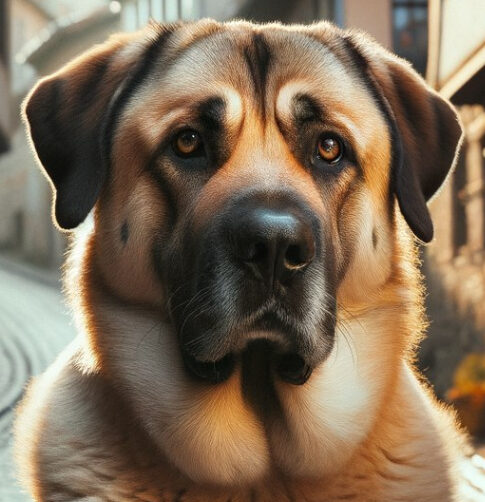Introduction
The Anatolian Shepherd is a breed renowned for its adaptability and resilience in harsh climates. This remarkable canine, originating from the rugged terrains of Turkey, has developed unique traits that allow it to thrive in extreme weather conditions. From scorching deserts to frigid winters, the Anatolian Shepherd’s climate endurance makes it a fascinating subject of study. In this article, we delve deep into the factors contributing to this breed’s resilience, exploring its historical roots, physical attributes, and the genetic and behavioral adaptations that make it a true marvel of nature.
Definition and Overview
What is the Anatolian Shepherd?
The Anatolian Shepherd is a large, muscular breed traditionally used as a livestock guardian dog. Known for its independence, intelligence, and loyalty, the breed has a history spanning thousands of years. Its primary role has been to protect flocks from predators, including wolves, bears, and jackals.
Key Characteristics
- Size: Males typically weigh between 110-150 pounds, while females range from 80-120 pounds.
- Coat: Dense, double-layered coat that varies in length and provides insulation.
- Lifespan: 11-13 years.
- Temperament: Calm, protective, and independent.
The Anatolian Shepherd’s robust nature stems from its unique combination of physical and behavioral traits, which we’ll examine in detail.
Historical Background
The Anatolian Shepherd’s lineage dates back over 6,000 years to the Anatolian Plateau in modern-day Turkey. This region’s challenging environment played a significant role in shaping the breed’s physical and behavioral characteristics.
Origin and Evolution
The breed’s ancestors were likely introduced to the region by nomadic tribes who needed hardy dogs capable of enduring extreme conditions. Over centuries, selective breeding enhanced their ability to withstand hot summers and cold winters while maintaining their guarding instincts.
Cultural Significance
In Turkey, Anatolian Shepherds are considered national treasures. They’ve been instrumental in preserving livestock, which is a cornerstone of the country’s agricultural economy. The breed’s importance extends beyond its homeland, as it is now used worldwide for livestock protection and even conservation efforts.
Key Features and Adaptations
Physical Adaptations
- Double Coat:
- The outer coat is weather-resistant, protecting the dog from rain, snow, and UV radiation.
- The undercoat provides insulation, keeping the dog warm in winter and cool in summer.
- Large Size and Strength:
- Their muscular build allows them to traverse rugged terrains and fend off predators.
- Skin and Fur Coloration:
- Light-colored fur reflects sunlight, reducing heat absorption.
- Dark facial markings provide glare protection, much like natural sunglasses.
Behavioral Traits
- Nocturnal Vigilance:
- Anatolian Shepherds are most active at night, allowing them to guard livestock during predator activity peaks.
- Independent Thinking:
- Their self-reliance enables them to make decisions without constant human direction, essential in remote areas.
- Energy Conservation:
- During hot days, they conserve energy by remaining inactive, preserving their strength for critical tasks.
Benefits and Importance
Livestock Protection
The Anatolian Shepherd’s primary role is safeguarding livestock. Their imposing size and intimidating presence deter predators, while their keen senses alert them to potential threats.
Conservation Efforts
Anatolian Shepherds have been employed in wildlife conservation projects. For example, in Namibia, they help protect livestock from cheetahs, reducing the need for farmers to harm these endangered cats.
Adaptability in Diverse Climates
Their ability to acclimate to different environments makes them suitable for various regions, from arid deserts to snowy mountains.
Challenges and Drawbacks
Health Concerns
- Hip Dysplasia:
- A common issue in large breeds, causing joint pain and mobility problems.
- Bloat:
- A life-threatening condition requiring immediate veterinary attention.
Training and Socialization
- Their independent nature can make training challenging for inexperienced owners.
- Early socialization is crucial to prevent aggression toward unfamiliar animals or people.
High Energy Needs
While they conserve energy in extreme heat, they require regular exercise and mental stimulation in temperate climates to prevent boredom and destructive behavior.
Future Trends and Developments
Genetic Research
Advances in canine genetics could help breeders focus on health improvements, reducing hereditary conditions like hip dysplasia.
Sustainable Breeding Practices
Efforts are underway to ensure the breed’s preservation without compromising its unique traits. This includes maintaining genetic diversity and preventing overbreeding.
Expanding Roles
As the need for sustainable agriculture grows, Anatolian Shepherds are being considered for roles in regenerative farming and new conservation projects worldwide.
FAQs
1. Why is the Anatolian Shepherd so resilient in extreme climates?
The breed’s double coat, large size, and adaptive behaviors, such as energy conservation and nocturnal activity, contribute to its climate resilience.
2. Are Anatolian Shepherds good family pets?
While they can be loyal and protective family dogs, their size and independent nature require experienced handling and training.
3. How do Anatolian Shepherds help in conservation?
By guarding livestock, they reduce conflicts between farmers and predators, helping to protect endangered species.
4. What climates are unsuitable for Anatolian Shepherds?
They adapt well to most climates but require shade and water in extremely hot regions and shelter in extreme cold.
5. How long do Anatolian Shepherds live?
Their average lifespan is 11-13 years, though good care can extend their longevity.
Conclusion
The Anatolian Shepherd’s remarkable climate endurance is a testament to its evolutionary adaptations and centuries of careful breeding. Whether as a livestock guardian, conservation ally, or loyal companion, this breed exemplifies resilience and versatility. As we continue to face environmental challenges, the Anatolian Shepherd’s traits offer valuable lessons in adaptability and coexistence.
